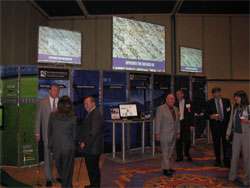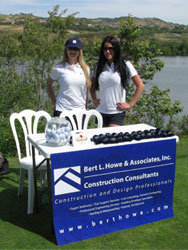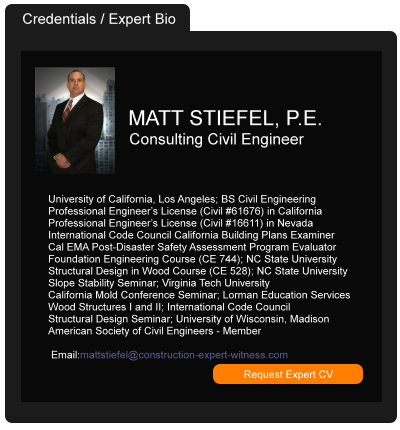“Rip and Tear” Damage Remains Covered Under CGL Policy as “Accident”—for Now.
September 01, 2016 —
Michael Lindsay & Luke Mecklenburg – Snell & Wilmer Real Estate Litigation BlogThe Colorado Supreme Court has approved a settlement between the parties to an appeal of the 2012 Colorado Pool Systems v. Scottsdale Insurance Company Court of Appeals case, leaving that ruling intact. The ruling parses a fine line between uncovered costs of repairing defective work and covered costs of damage caused to nondefective work while repairing defective work. This nuanced opinion, which is now established Colorado law, is worth a second look.
In Colorado Pool Systems, Inc. v. Scottsdale Insurance Company, the Colorado Court of Appeals determined that so-called “rip and tear” damage caused by a construction professional to nondefective work while correcting defective work is covered as an “accident” under standard Commercial General Liability insurance language. 317 P.3d 1262 (Colo. App. 2012). A pool company excavated and built a rebar frame in order to construct a pool, but it hired a subcontractor to pour the concrete. An inspector later noticed that some of the rebar was too close to the surface, and the pool company agreed to demolish and replace the pool after an agent of its insurer represented that this loss would be covered. But the agent was wrong, the insurer denied coverage, and litigation ensued.
Reprinted courtesy of
Michael Lindsay, Snell & Wilmer and
Luke Mecklenburg, Snell & Wilmer
Mr. Lindsay may be contacted at mlindsay@swlaw.com
Mr. Mecklenburg may be contacted at lmecklenburg@swlaw.com
Read the court decisionRead the full story...Reprinted courtesy of
San Diego’s NFL Stadium Dream Counts on Munis for Chargers’ Home
June 10, 2015 —
James Nash and Darrell Preston – BloombergSan Diego, still dealing with the legacy of a pension crisis that led politicians to consider bankruptcy a decade ago, may throw taxpayer money behind municipal bonds for a football-stadium bidding war.
The city and the National Football League’s Chargers are negotiating on a proposed $1.3 billion coliseum to keep the team from leaving for Los Angeles. A plan backed by a city panel would have San Diego pay $121 million of the new stadium’s debt, even though it still owes $52 million for the Chargers’ current home. San Diego County would chip in, too.
The quest to keep the team has triggered a debate over whether to finance professional football as the city deals with $2 billion of deferred maintenance brought about in part by mounting pension costs. The city’s retirement system has a shortfall just as large, which led voters three years ago to approve reducing benefits for city workers.
Reprinted courtesy of
James Nash, Bloomberg and
Darrell Preston, Bloomberg Read the court decisionRead the full story...Reprinted courtesy of
2011 West Coast Casualty Construction Defect Seminar – Recap
June 01, 2011 —
CDJ STAFF �  | �
�| Event exhibitors and sponsors contribute to an informative and engaging environment | �
�This year’s meeting was the best yet for the industry-leading construction defect and claims event.
�This year’s seminar concluded on May 13, 2011 with the Construction Defect Community Charitable Foundation Golf Tournament, held at Strawberry Farms Golf Course.
�The Disneyland Hotel in Anaheim, California was the place where more than 1,500 attendees convened for two days of professional development activities and seminars that included CLE workshops and panel discussions of special interest to legal and insurance professionals concerned with construction defect and claims litigation. Key events included “Challenges for Experts in Construction Defect Claims and Litigation,” “Keeping Up with Construction Defect Coverage,” and “Tips for Avoiding the ‘Perfect Storm’ in Handling of Wrap Claims.”
� �  | �
�| Supporting the golf tournament at the 15th hole | �
�This year’s Ollie award was given to George D. Calkins II, Esq. The West Coast Casualty Jerrold S. Oliver Award of Excellence was named in honor of the late Judge Jerrold S. Oliver, and recognizes an individual who is outstanding or has contributed to the betterment of the construction community.
�In addition to being the most comprehensive professional development seminar in the area of construction defects, this year’s seminar was equally valuable as a networking opportunity for members of the industry. People participated in professional development events during the day and then continued networking in the evening at numerous social events. The Lawn Party as well as the legendary Wood, Smith, Henning & Berman events were very well attended. Additional valuable networking events were hosted by a number of industry professionals at the House of Blues, and Tortilla Joe’s.
�As of this writing the 2011, West Coast Casualty's Construction Defect Seminar has applied for or has already received the following continuing education accreditation in the following areas;
�Read the full story…
�For more information about next year’s event, visit West Coast Casualty.
Read the court decisionRead the full story...Reprinted courtesy of
Angels Among Us
June 21, 2024 —
Maggie Murphy - Construction ExecutiveIn the early morning hours of March 26, 2024, an outbound cargo ship in the Port of Baltimore unexpectedly lost power as it churned toward the Francis Scott Key Bridge. Authorities had just minutes to stop vehicular traffic before the massive vessel—985 feet long and 157 feet wide, nearly as tall as the Eiffel Tower if stood on end—crashed headlong into one of the bridge’s support piers. Quick-acting dispatchers were able to stop the flow of traffic in time, but overnight work crews filling potholes on the bridge didn’t have enough warning. Six workers lost their lives when the bridge collapsed.
On top of bringing immense grief, construction fatalities can be financially devastating to the surviving families. Enter Construction Angels, a nonprofit that provides financial assistance, grief counseling and scholarships to families of fallen construction workers. When founder Kristi Ronyak first heard news of the Key Bridge collapse, she immediately jumped into action. “We started getting calls just hours after the crash,” Ronyak says. “When I first heard the news, my heart sank, and I just started crying.
Reprinted courtesy of
Maggie Murphy, Construction Executive, a publication of Associated Builders and Contractors. All rights reserved.
Read the court decisionRead the full story...Reprinted courtesy of
Eastern District of Pennsylvania Clarifies Standard for Imposing Spoliation Sanctions
October 19, 2020 —
Kean Maynard - The Subrogation StrategistCourts are faced with the difficult task of drawing a line to determine when the failure to preserve evidence becomes culpable enough to permit a judicial remedy. In State Farm Fire & Cas. Co. v. Cohen, No. 19-1947, 2020 U.S. Dist. LEXIS 163681, the United States District Court for the Eastern District of Pennsylvania (District Court) made clear that a party is not entitled to a spoliation sanction without proof that the alleged spoliation was beyond accident or mere negligence. The District Court emphasized that when evidence goes missing or is destroyed, the party seeking a spoliation sanction must show that the alleged spoliation was intentional and that the alleged spoliator acted in “bad faith” before adverse inferences will be provided.
In Cohen, Joshua Cohen (Cohen) rented a residential property to Lugretta Bryant (Bryant). Bryant’s property suffered damages as a result of a kitchen fire. Bryant’s insurer, proceeding as subrogee, hired a fire investigator to determine the cause and origin of the fire. Based on eyewitness testimony and examination of the burn patterns, the fire investigator concluded that the fire started at the General Electric (GE) microwave located in the kitchen. The investigator advised all parties to preserve the microwave so that a joint examination could take place with the property owner and GE present. In the following weeks, the tenant returned to the property to collect belongings and perform some cleaning in anticipation of repairs beginning. Importantly, the tenant claimed the microwave was preserved during these cleaning efforts and remained at the site as instructed. However, in the fall of 2017, one of Cohen’s workers discovered that the microwave was missing and its whereabouts remain unknown.
Read the court decisionRead the full story...Reprinted courtesy of
Kean Maynard, White and WilliamsMr. Maynard may be contacted at
maynardk@whiteandwilliams.com
Minnesota Civil Engineers Give the State's Infrastructure a "C" Grade for the Second Time
May 02, 2022 —
American Society of Civil EngineersSAINT PAUL, Mn. — The Minnesota Section of the
American Society of Civil Engineers (ASCE) today released preliminary findings from the 2022
Report Card for Minnesota's Infrastructure, with 10 categories of infrastructure receiving an overall grade of a 'C', meaning Minnesota's infrastructure is in mediocre condition. Minnesota has taken steps to make its infrastructure network more sustainable to withstand increasingly severe weather, but additional steps must be taken as the state's infrastructure is aging. Funding has been limited for systems throughout the state, particularly for surface transportation networks, and local and state funding must be increased to bring these critical systems up to speed. Civil engineers graded aviation (B), bridges (C), dams (C), drinking water (C-), energy (C), parks (B-), ports (C-), roads (D+), transit (C-) and wastewater (C).
"The ASCE report card serves as an important benchmark for where our infrastructure currently stands and lays out how we can make improvements," said Sen. Sandy Pappas, DFL-St. Paul. "Knowing that these systems play such a crucial role in economic progress and the safety of Minnesotan families, we have made infrastructure a topline issue and must continue to do so to secure a prosperous future here in Minnesota."
ABOUT THE AMERICAN SOCIETY OF CIVIL ENGINEERS
Founded in 1852, the American Society of Civil Engineers represents more than 150,000 civil engineers worldwide and is America's oldest national engineering society. ASCE works to raise awareness of the need to maintain and modernize the nation's infrastructure using sustainable and resilient practices, advocates for increasing and optimizing investment in infrastructure, and improve engineering knowledge and competency. For more information, visit www.asce.org or www.infrastructurereportcard.org and follow us on Twitter, @ASCETweets and @ASCEGovRel.
Read the court decisionRead the full story...Reprinted courtesy of
Subcontractors Have Remedies, Even if “Pay-if-Paid” Provisions are Enforced
February 19, 2019 —
John P. Ahlers - Ahlers Cressman & Sleight PLLCIn a recent case in Kentucky[1], a sub-tier subcontractor sued the general contractor and owner for failure to pay for extra work. At the trial, the court held the subcontractor was entitled to recover under the theories of implied contracts and unjust enrichment, even though the subcontract contained a “pay-if-paid” clause. All parties appealed. In particular, the general contractor asserted that the pay-if-paid provision in the subcontract precluded recovery by the subcontractor. The issue was petitioned to the Supreme Court of Kentucky.
The question to be resolved by the Supreme Court of Kentucky was whether a pay-if-paid provision was enforceable as between a general contractor and subcontractor, and if so, whether the subcontractor could nevertheless pursue the owner directly for payment notwithstanding a lack of privity between the owner and subcontractor.
Read the court decisionRead the full story...Reprinted courtesy of
John P. Ahlers, Ahlers Cressman & Sleight PLLCMr. Ahlers may be contacted at
john.ahlers@acslawyers.com
Best Lawyers Recognizes Fifteen White and Williams Lawyers
August 17, 2017 —
White and Williams LLPFifteen White and Williams lawyers were recognized on the 2018 Best Lawyers in America list. Inclusion in Best Lawyers is based entirely on peer-review. The methodology is designed to capture, as accurately as possible, the consensus opinion of leading lawyers about the professional abilities of their colleagues within the same geographical area and legal practice area. Best Lawyers employs a sophisticated, conscientious, rational, and transparent survey process designed to elicit meaningful and substantive evaluations of quality legal services.
Read the court decisionRead the full story...Reprinted courtesy of




































































